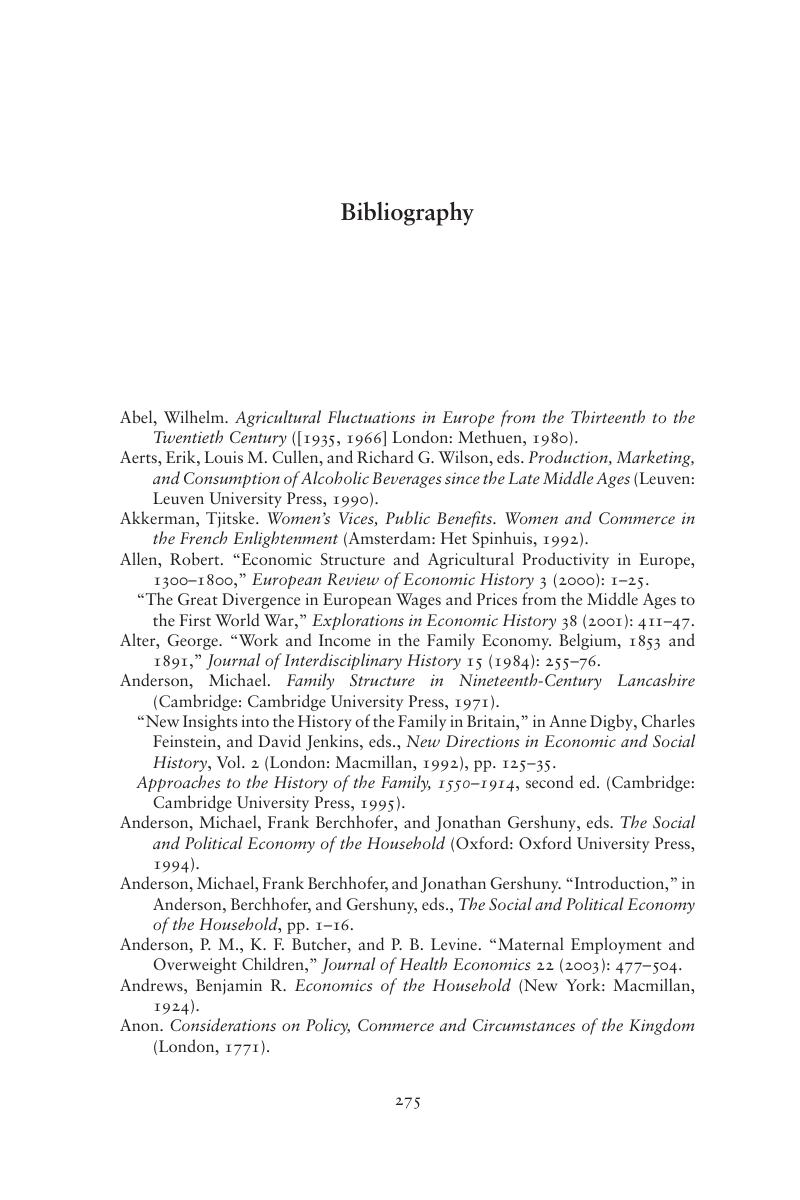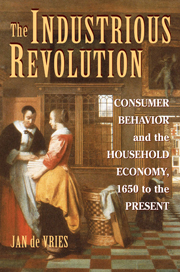Book contents
- Frontmatter
- Contents
- List of Figures
- Preface and Acknowledgments
- 1 The Transformation of Consumer Desire in the Long Eighteenth Century
- 2 The Origins of the Industrious Revolution
- 3 The Industrious Revolution: The Supply of Labor
- 4 The Industrious Revolution: Consumer Demand
- 5 The Breadwinner–Homemaker Household
- 6 A Second Industrious Revolution?
- Bibliography
- Index
- References
Bibliography
Published online by Cambridge University Press: 05 June 2012
- Frontmatter
- Contents
- List of Figures
- Preface and Acknowledgments
- 1 The Transformation of Consumer Desire in the Long Eighteenth Century
- 2 The Origins of the Industrious Revolution
- 3 The Industrious Revolution: The Supply of Labor
- 4 The Industrious Revolution: Consumer Demand
- 5 The Breadwinner–Homemaker Household
- 6 A Second Industrious Revolution?
- Bibliography
- Index
- References
Summary

- Type
- Chapter
- Information
- The Industrious RevolutionConsumer Behavior and the Household Economy, 1650 to the Present, pp. 275 - 314Publisher: Cambridge University PressPrint publication year: 2008



